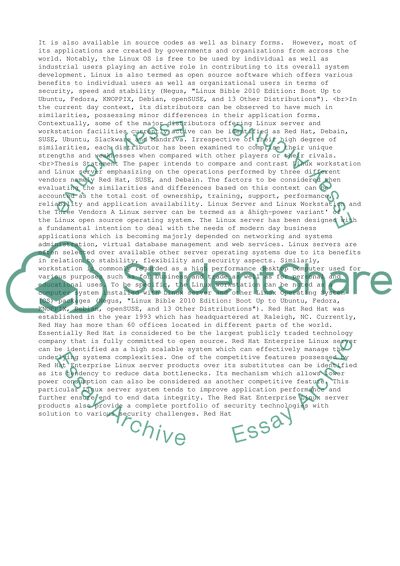Cite this document
(“Feasibility of Using Linux in both the Server and Workstation Research Paper”, n.d.)
Feasibility of Using Linux in both the Server and Workstation Research Paper. Retrieved from https://studentshare.org/business/1467803-research-the-feasibility-of-using-linux-in-both
Feasibility of Using Linux in both the Server and Workstation Research Paper. Retrieved from https://studentshare.org/business/1467803-research-the-feasibility-of-using-linux-in-both
(Feasibility of Using Linux in Both the Server and Workstation Research Paper)
Feasibility of Using Linux in Both the Server and Workstation Research Paper. https://studentshare.org/business/1467803-research-the-feasibility-of-using-linux-in-both.
Feasibility of Using Linux in Both the Server and Workstation Research Paper. https://studentshare.org/business/1467803-research-the-feasibility-of-using-linux-in-both.
“Feasibility of Using Linux in Both the Server and Workstation Research Paper”, n.d. https://studentshare.org/business/1467803-research-the-feasibility-of-using-linux-in-both.


